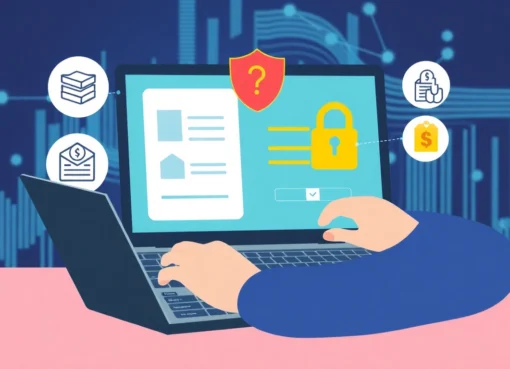Comprehensive Guide to Securing a Business Loan for Your Growth

Understanding Business Loans: Types and Benefits
Securing the right funding is a critical step in transforming your business idea into a thriving enterprise. A business loan can serve as a powerful tool to inject capital into your operations, whether you’re starting anew, scaling up, or managing cash flow. But understanding the different types of business loans, their benefits, and how to navigate the application process is essential for making informed financial decisions that align with your company’s goals. This comprehensive guide explores the nuances of business loans, helping entrepreneurs and business owners maximize their potential for growth and sustainability.
Different Types of Business Loans
Business loans come in various forms, each tailored to meet specific needs and circumstances. Selecting the right type depends on factors such as loan size, repayment terms, purpose, and your business’s financial health.
Traditional Term Loans
Term loans are one of the most common types of business financing. They provide a lump sum of capital upfront, which is repaid over a fixed period through regular payments. These loans are suitable for one-time investments like purchasing equipment, real estate, or expanding operations. Rates can be fixed or variable, and approval depends on creditworthiness and collateral.
SBA Loans
The U.S. Small Business Administration (SBA) offers loan programs that guarantee a significant portion of the loan, reducing lender risk. Notably, the 7(a) loan program supports startups and established businesses with amounts from $500 up to $5.5 million, providing flexible use for working capital, equipment, or real estate. SBA microloans, typically up to $50,000, are ideal for small projects and startups needing smaller cash infusions.
Lines of Credit
A business line of credit functions like a credit card, offering access to funds up to a predetermined limit. It provides flexibility for managing cash flow fluctuations, purchasing inventory, or handling unexpected expenses. Interest is only charged on the amount borrowed, making it a cost-effective short-term financing option.
Equipment Financing
This type of loan is specifically designed to purchase machinery, tools, or vehicles. The equipment itself serves as collateral, which often simplifies approval procedures. Payments are structured around the lifespan of the equipment, aligning depreciation with cash flow.
Invoice Financing and Factoring
For businesses with outstanding invoices, invoice financing allows quick access to cash based on accounts receivable. Factoring involves selling receivables to a third-party at a discount, providing immediate liquidity but at a cost.
Merchant Cash Advances
This is a form of funding where lenders provide a lump sum in exchange for a percentage of future credit card sales. It is typically used for short-term needs and has higher costs due to its convenience and quick approval process.
How Business Loans Fuel Business Expansion
Access to appropriate financing accelerates growth, enables new product development, and opens new markets. Here’s how business loans serve as catalysts for expansion:
Scaling Operations and Workforce
Growing companies often face increased demand that current operations can’t meet. Loans allow business owners to hire additional staff, expand facilities, and invest in infrastructure, thus increasing capacity and productivity.
Developing New Products or Services
Innovative product development requires investment in R&D, prototyping, and marketing. Business loans provide the necessary capital to innovate without severely impacting day-to-day cash flow.
Market Expansion
Entering new geographic markets or customer segments involves logistical costs and local marketing efforts. Funding facilitates these initiatives, helping businesses reach wider audiences more efficiently.
Equipment and Technology Upgrades
Maintaining competitiveness necessitates upgrading technology and equipment. Business loans support these investments, leading to improved efficiency and service quality.
Working Capital Management
Sudden market opportunities or seasonal fluctuations may require additional funds. Loans provide a safety net, ensuring ongoing operations without disruption.
Choosing the Right Loan for Your Business Needs
Effective decision-making begins with a clear understanding of your specific requirements and financial situation. Consider the following criteria:
- Purpose of the Loan: Whether you need funds for expansion, inventory, or working capital influences the loan type.
- Loan Amount Needed: Larger projects may benefit from SBA loans or traditional term loans, while small operational needs might be met through lines of credit.
- Repayment Terms: Assess your cash flow to determine suitable loan durations and payment frequencies.
- Interest Rates and Fees: Compare fixed and variable rates, as well as associated costs, to minimize total repayment amounts.
- Collateral Requirements: Understand what assets may be required to secure the loan, if any.
- Approval Timeframe: Some loans, like lines of credit and merchant advances, offer quick access, whereas traditional bank loans might take weeks.
Engaging with multiple lenders and leveraging resources like SBA loan options can help you select the best fit for your business scenarios.
Applying for a Business Loan: Step-by-Step Process
Preparing Your Business Financials
Strong financial documentation is cornerstone to a successful application. Gather recent financial statements, including income statements, balance sheets, and cash flow statements. Maintain accurate records of your business history, tax returns, and existing debts. A solid understanding of your financial health demonstrates reliability and reduces lender concerns.
Evaluating Lenders and Loan Options
Research various lenders—bank institutions, credit unions, online lenders, and government-backed programs. Consider the terms, interest rates, approval times, and customer reviews. For startups or those with limited credit history, alternative lenders or microloan programs might be preferable. Visiting resources like the Wells Fargo business credit page provides insight into options tailored for different business profiles.
Required Documentation and Approval Tips
- Business registration documentation
- Tax returns (personal and business)
- Financial statements and bank statements
- Business plan with growth projections
- Collateral documentation, if applicable
- Legal agreements and permits
To increase your chances of approval, ensure your credit score is optimized, your business plan is compelling, and you can clearly demonstrate repayment ability.
Maximizing Your Chances: Tips for a Successful Application
Strengthening Your Credit Profile
Lenders assess creditworthiness based on your personal and business credit scores. Regularly monitor your credit reports for inaccuracies, reduce existing debts, and maintain prompt payment histories. Establishing a good credit profile enhances your credibility and can qualify you for more favorable loan terms.
Crafting a Convincing Business Plan
A detailed business plan articulates your vision, target market, competitive advantage, revenue projections, and risk mitigation strategies. It reassures lenders about your capacity to generate revenue and repay the loan. Including realistic financial forecasts and contingency plans demonstrates preparedness.
Understanding and Meeting Loan Requirements
Different lenders have specific eligibility criteria. Review these prerequisites thoroughly—such as minimum credit scores, collateral needs, or business age—to tailor your application. Address potential gaps beforehand and consider seeking advice from financial advisors or industry experts.
Managing and Repaying Your Business Loan Effectively
Implementing Loan Funds Wisely
Use the funds according to your outlined plan. Whether investing in equipment, hiring, or marketing, track expenses meticulously. Regularly review financial performance to ensure spending aligns with revenue growth, avoiding unnecessary costs that could jeopardize repayment ability.
Monitoring Business Performance and Cash Flow
Establish key performance indicators (KPIs), such as sales growth, profit margins, and debt service coverage ratios. Employ financial management tools or software to track these metrics continuously. This proactive approach helps identify potential issues early and informs decision-making.
Strategies for Timely Repayment and Building Credit
Prioritize scheduled payments to maintain a positive credit record. Consider setting up automated payments and establishing emergency reserves. Demonstrating timely repayment history can qualify you for future funding and better terms with lenders.
Alternatives and Resources for Small Business Financing
SBA Microloans and Grants
Microloans, often up to $50,000, target startups and small businesses needing working capital, inventory financing, or equipment. Although grants are limited, some government programs provide subsidies or matching funds for specific sectors or demographics, valuable in reducing overall costs.
Private Lending and Investor Funding
Pursuing angel investors, venture capitalists, or crowdfunding campaigns offers alternative pathways. While these options may involve equity dilution or higher expectations, they can provide significant capital without traditional debt obligations.
Government Programs Supporting Business Loans
Beyond SBA offerings, consider programs like USDA Rural Development loans, which support rural entrepreneurs, or local government grants and loan guarantees. These initiatives can lower borrowing costs and improve access to capital.


